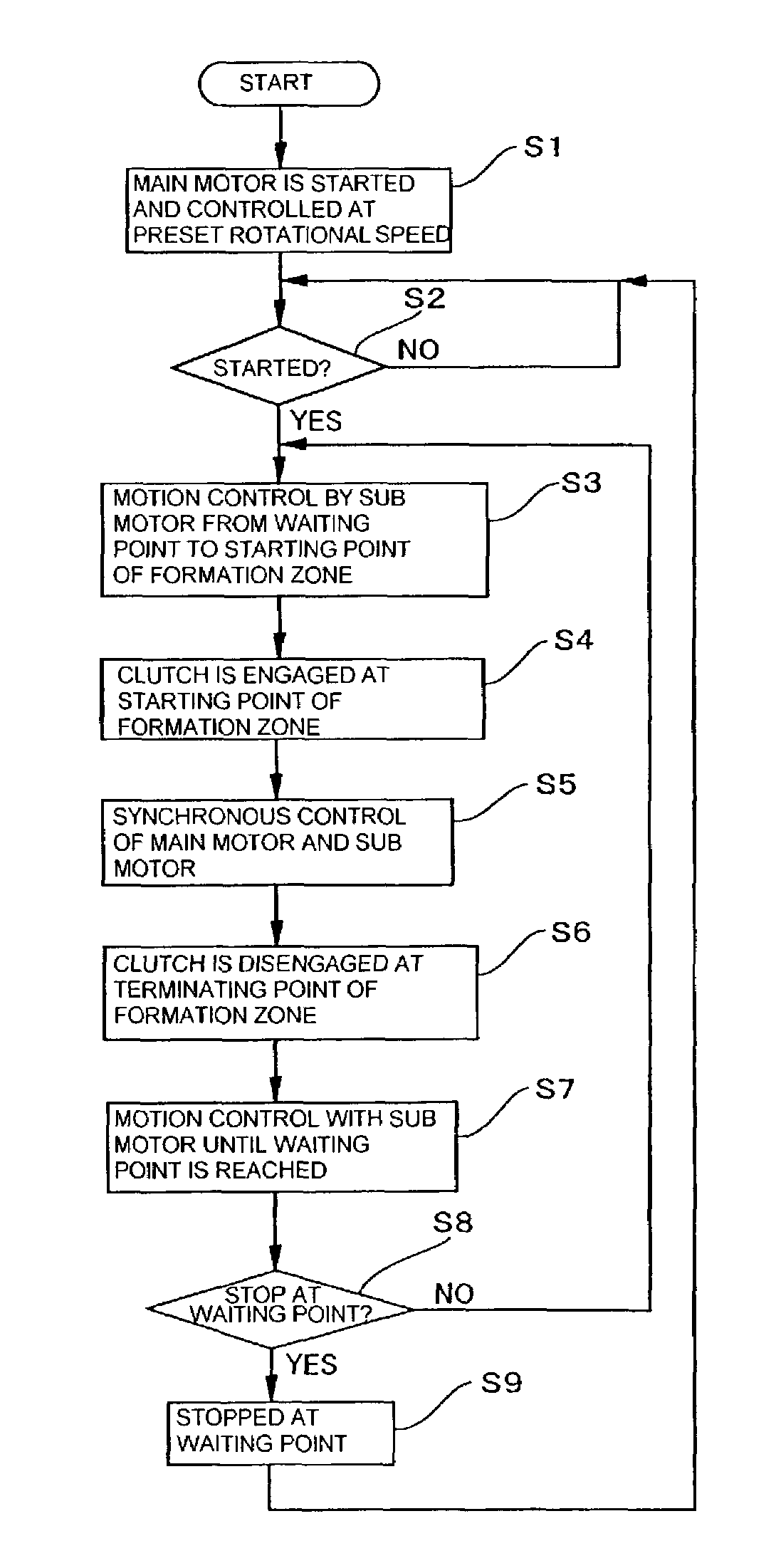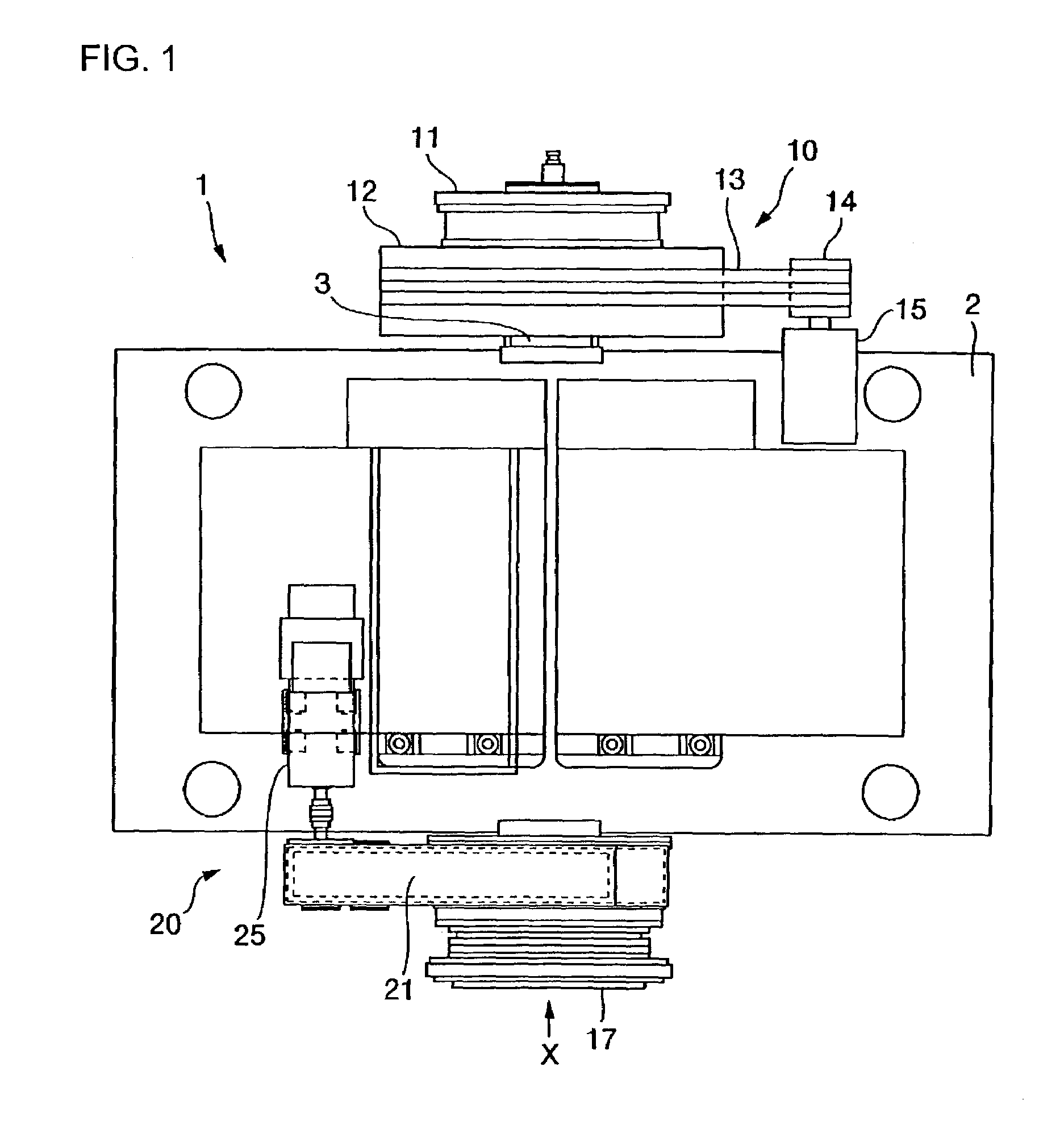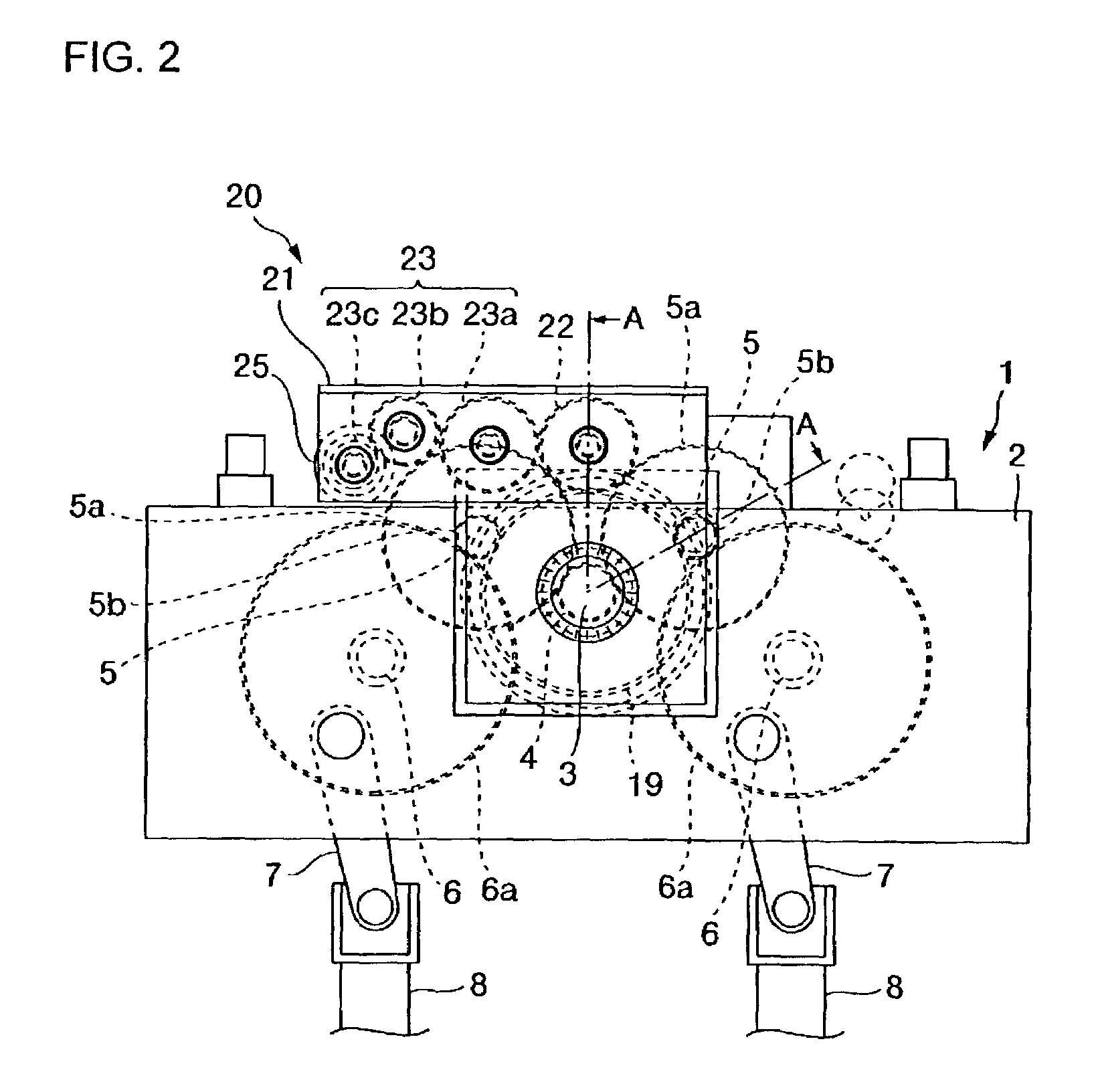Drive unit and drive method for press
a technology of drive unit and drive shaft, which is applied in forging presses, forging/pressing/hammering apparatuses, manufacturing tools, etc., can solve the problems of increasing noise when the press touches the workpiece, speed not meeting the desirable forming conditions, and the inability to increase the rotational speed of the slide drive sha
- Summary
- Abstract
- Description
- Claims
- Application Information
AI Technical Summary
Benefits of technology
Problems solved by technology
Method used
Image
Examples
Embodiment Construction
[0024]Referring now to the accompanying drawings, a press drive unit and a press drive method will be hereinafter described according to an embodiment of the invention.
[0025]First, reference is made to FIGS. 1 to 3 to explain the structure of the slide drive unit of a press to which the invention is applied. FIG. 1 is a plan view of a crown of the press. FIGS. 2 and 3 are a view when viewed from X of FIG. 1 and a sectional view taken along line A-A of FIG. 2, respectively.
[0026]According to the present embodiment, disposed within a crown 2 positioned at the upper part of a press 1 is a slide drive unit whose drive shaft 3 is rotatably supported by the frame of the crown 2. At a first end of the drive shaft 3, a first drive system 10 is provided, and at a second end, a second drive system 20 is provided.
[0027]More specifically, a clutch 11 for the drive system 10 is mounted on the first end of the drive shaft 3. The clutch 11 has a drive center 11a which is provided with a facing (no...
PUM
| Property | Measurement | Unit |
|---|---|---|
| rotation angle | aaaaa | aaaaa |
| speed | aaaaa | aaaaa |
| cycle time | aaaaa | aaaaa |
Abstract
Description
Claims
Application Information
 Login to View More
Login to View More - R&D
- Intellectual Property
- Life Sciences
- Materials
- Tech Scout
- Unparalleled Data Quality
- Higher Quality Content
- 60% Fewer Hallucinations
Browse by: Latest US Patents, China's latest patents, Technical Efficacy Thesaurus, Application Domain, Technology Topic, Popular Technical Reports.
© 2025 PatSnap. All rights reserved.Legal|Privacy policy|Modern Slavery Act Transparency Statement|Sitemap|About US| Contact US: help@patsnap.com



